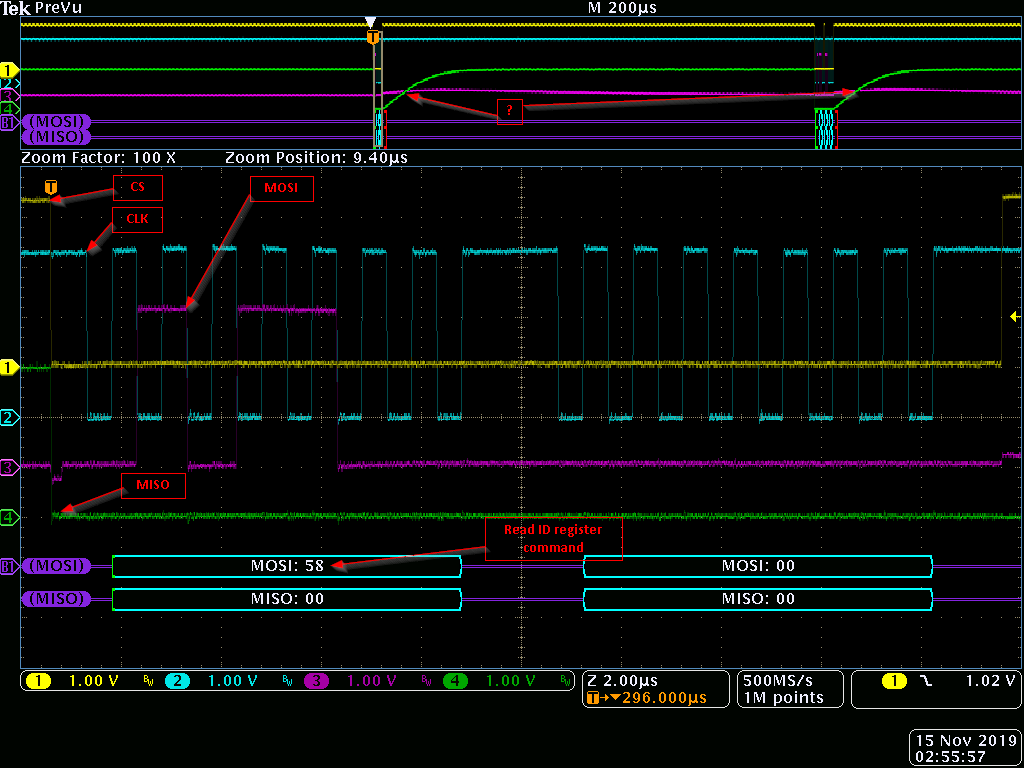Dear Sirs
I'm using the EK-TM4C1294XL LaunchPad to talk to a ADI ADT7311 temperature sensor by way of the SPI bus. I have CS, CLK and MOSI signals, but no MISO signa. I've tried SSI0 through SSI2 with the same results. Please see attached scope screen print. Any help will be appreciated. Please note the MISO signal rise. I'm sure this is not right.


